Imagine you are stuck on an island and feeling pretty rotten, but your medicine box is running on empty….what can you do? A walk along Fiji’s seashore and into the rainforests unearths a natural cure for almost every ailment.
If you ask any of us here in Fiji about wai ni mate vaka viti (native Fijian medicine), you will find many different remedies that can be brewed or concocted to help treat a range of ailments from a simple mozzie bite to a crippling migraine!
As a child growing up in Fiji, I was always given (and due to its overpowering taste – practically forced to drink) a small cup of Lailai elixir, a native ginger root grated and mixed with water that promoted general health and wellbeing.
To this day despite being eternally grateful to the plant for a healthy childhood, I have a slight dislike for the taste of ginger and hold the potent Lailai mix completely responsible.
Here we look at a few of the most common plants you can find on any coastline in Fiji.
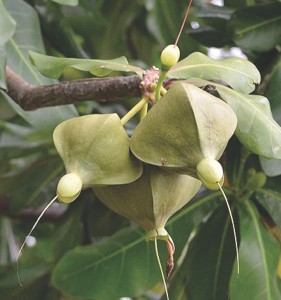
Fijian name: Tavola
English name: Beach Almond Tree
Scientific name: Terminalia catappa
The Tavola tree grows near the beach but can be found inland as well.
It grows into a very tall tree with one main trunk from which the branches stand straight out, like an umbrella.
The leaves are large and pear shaped, dull green in colour which turn gold and red before falling from the tree making them completely bare, once a year.
Mainly used as a general tonic or pick-me-up after illness and commonly given to children who are lethargic.
Headaches and migraine may be remedied by squeezing the juice of the leaf into the nostrils.
The leaves may also be chewed and their juice swallowed as the treatment of a simple cough, and can be applied directly to aid healing of wounds and burns.
The Tavola seed is edible, but you must get through the fibrous outer layers before finding the kernel inside.
The kernel is delicious roasted and can be used as a substitute for pine nuts in pesto.
Fijian name: Quwawa
English name: Guava
Scientific name: Psidium guajava
This is a renowned medicine of the tropics and a fruit that most people should be familiar with.
The guava tree has become an invasive species in Fiji and you can find one almost anywhere. It is commonly used to treat diarrhea and dysentery.
The young leaves are pounded and soaked in water, this mixture is then drunk or alternatively the leaves can be chewed and the juice swallowed, spitting out the dry remains.
Sometimes you may find that if you eat too many of the fruit, especially green; you end up with constipation or a very sore tummy. I’d recommend not eating too many. Another interesting fact about the guava is that it is believed to alleviate a hangover when tender guava leaves are chewed before taking intoxicating drinks, so before overdosing on Fijian Bounty Rum, have a chew on some guava leaves!
Fijian name: Wa Bosucu
English name: Mile-a-minute
Scientific name: Mikania micrantha
Called by this name because that is just what it does given half the chance.
It can cover and ruin a garden in a very short space of time. Has rather pointy leaves and when in flower has clumps of very small white blossoms.
The juice of the leaves may be used for the treatment of wounds and is valued as a remedy to stop bleeding. Crush up the leaves in your palms and apply directly to the wound.
Also great to apply to stings of any sort.
Fijian name:: Vau
English name: Beach hibiscus
Scientific name: Hibiscus tiliaceus
Very common by the seaside, the Vau has many uses, not only medicinal. Has heart shaped papery leaves and yellow or dark red flowers very much like hibiscus bloom.
The stringy bark can also be used for rope. For sprained limbs, the leaves are placed over the swelling and strapped on overnight.
By the next morning the swelling has usually disappeared and the limb is massaged with oil, to strengthen it. This treatment works surprisingly well.
Fijian name: Totodro
Scientific name: Centella asiatica
This is a ground creeper that has leaves very similar to a voilet, which are small and round with crinkly edges.
The leaves have antiseptic as well as antimicrobial properties.
Leaves can be used to stop bleeding of wounds by acting as a clotting agent and are also pounded up and the juice drunk for severe stomach ache and/or period pains.
Fijian name: Niu
English name: Coconut Palm
Scientific name: Cocos nucifera
Coconut is highly nutritious and rich in fiber, vitamins, and minerals. It is classified as a “functional food” because it provides many health benefits beyond its nutritional content.
Coconut oil is of special interest because it possesses healing properties far beyond that of any other dietary oil and is extensively used in traditional medicine among Asian and Pacific populations.
Pacific Islanders consider coconut oil to be the cure for all illness. For the treatment of fish poisoning or seafood poisoning, grate the coconut flesh and squeeze the milk from this to make nearly a cupful, drink as much of the liquid as is possible and repeat often.
Fijian name: Botebote Koro
English name: Goat Weed
Scientific name: Ageratum conyzoides
For a personal guided tour of Stones Nursery, Leah or one of her employees will be happy to show you around for a nominal fee of $15.00 pp. Contact details : Lot 32, Evuevu Place, Pacific Harbour Phone: +679 8673600 Email: [email protected]
The leaves of this plant have antiseptic properties. The crushed leaves help to stop bleeding (of wounds) by encouraging clotting. The leaves are also crushed and used as a poultice for boils, sores and swollen feet. Essential oils from this plant have been shown to demonstrate antibacterial properties against a certain strain of bacterium, staphylococcus aureus. The plant has also shown anti fungal and anti inflammatory properties
Leah Stone
Leah Stone is Fiji born and raised, based in Pacific Harbour.
After studying Horticulture and Marine Science in New Zealand, she returned to Fiji where she manages her family’s spectacular Palm Nursery.
She grew up on the ocean and is a keen environmentalist… and fisherwoman! Stones Nursery is home to mature species of palm from all over the world.
If you are looking for a shore based botanical experience, this is the place to go.

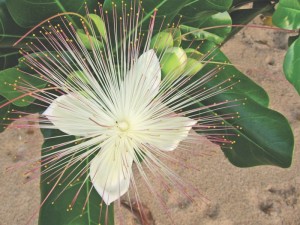
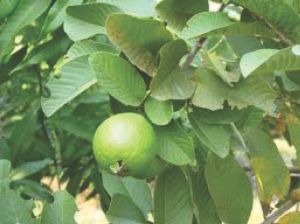
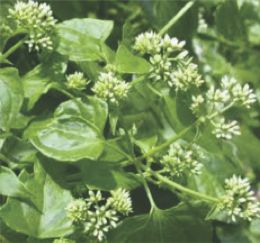
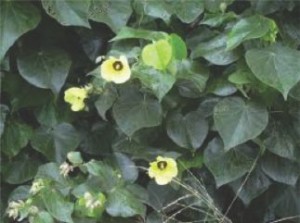
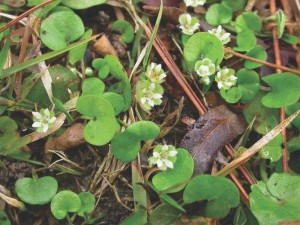
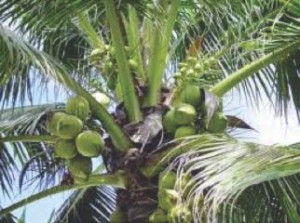
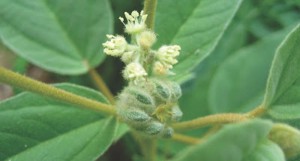
VaSco Saitadra says
awsome…….
maika says
Dear Leah you would be very helpful i’m sure to the running project of mobdelta.. we have just converted to ebook a work done by Itaukei Language and Culture way back in March 1992. To conserve and extend the work we have retyped the whole work, corrected it turned it to ebook available for free download at http://www.mobdelta.yolasite.com
I find you very useful because you have an interest in plants and have insight into pics and botanical names
Joni William Grahame Lewenilovo says
yep,really awesome!!
viliame says
wonderful page, even i’m a fijian. Only know those leaves by their names but dont know how they look like, the pictures have been very helpful
Ruth Johnson Turner says
Great article, I thought the first plant you spoke of was laialaia not lailai (meaning small) – I too was born and raised in Fiji and had this drink on a regular basis as well as dabi (bark scrapings) for coughs. Thanks for sharing and bringing back such wonderful memories of all the medicines that my grandmother treated us with. Never saw a doctor until I migrated.
Jennifer Young says
Used all those plants for their medicinal properties growing up in Fiji. Had forgotten what they looked like but seeing your pictures brought it all back
Levi says
Wow! Awesome! Keep up the great work.
Kate Stockford says
Hi Leah,
This is so wonderful!
Do you know of the Fijian plant Kawakawarau? and what it’s botanical name would be?
Many Thanks
Kate
Sifa says
Bula Leah, on a completely different note, do you know the name of the plant Fijians use to cause other to be sick?
It is prevalent here in Tonga and I have heard stories of the plant making members in that household sick and eventually die and then it moves on to another inhabitant. Upon removal the sick person recovers instantly the next day!
Apparently it was introduced by Fijians who deal in this kind of “voodoo” stuff.
I would like to let everybody in Tonga know about this evil plant.
Malo
Sifa
Vunisa says
Its Yaqona,just letting you know.
mohammed says
are you sure its yagona plant.
im curious.
olivia says
please help i cant find the kawakawarau tree anywhere online, is it meant to be kawakawa?? it healed the rugby player
Vunisa says
Can you describe it for me please it might have a different name that i might be familiar with.
Benjie says
Another name for kawakawarau is yaqonaqona.
Oswald Chambers says
This is very useful and thanks to you Leah for keeping the traditional way uphigh.
Vinaka
Oswald Chambers
jone rupeni says
Thank you so much for this much needed information,it starts to fade away from all nearly all Fijians regarding those species,once again thank you so much.
Paul Evers says
Hi Leah, Great work! My name is Paul and with a friend of mine Litea Varo we have been researching medicinal trees. Your first tree is …..well I think you need to talk with me. We have researched the origins and also the verified components of the plants.
Your post is timely and necessary. Keep up the good work
laisa.tabuakula says
how do we apply for kura does it applies to cold and flu
Maika Tupua says
Goto… Fijian Medicine group on FaceBook
jaycob says
Thanks for sharing, but the first picture is not of the tavola tree, it is the picture of the vutu tree
Isikeli Newton says
That’s correct…it’s not captioned as a Tavola plan though, it’s captioned correctly as the Sea Poison or the Barringtonia asiatica. I think the picture is used here more for contrast and comparison.
Seni Vasserman says
I have boiled the fruits of Kura. Cool and sift the juice and keep in fridge for daily tonic. Take 150 ml daily first thing before breafast. Workd wonders as an overall tonic for general wellbeing.
Seni VASSERMAN
Wendie Tuck says
What a wonderful page this is Leah. I too am Fiji born and bred and recognized these medicinal plants. I come home often and will be there in April 2017 so will try to call in as we make our way around the island from Suva to Nadi.
Josh says
very informative and quite interesting at the same time. Thank you for the good work.
Etta says
Good job for bringing awareness to these popular local remedies. I also grew up with the Lailai concoction that my Mom would make us drink in the mornings and there was no escaping from a his ritual! I live in Canada now and look to local plants for remedies on most ailments.
Inoke says
Many thanks for this information Leah!
At least for a start for people to know and use this plants during emergencies.
Last week the Fiji A/Minister for Health is encouraging people with diabetes to also use traditional medicine to assist alleviate diabetes and other diseases.
Phillip Isaac says
Great work Leah. @Jacob……that is not a Vutu tree because I have them grown allover my yard.
Isikeli Newton says
Enjoyed this read. Truly informative of the plants we use here at home.
@Phillip, the picture of the first plant is indeed that of a Barringtonia asiatica (as the caption points out) which in Fijian is simply known as the vutu plant. The Tavola, or Terminalia catappa has no pictures depicting it here, but tapping in the link(i.e the scientific name) it will take you to the Google search that shows pictures of the plant Tavola.
Thank you again Leah for this wonderful insights.
Vinaka.
Rina F says
Really enjoyed reading this and having many vivid memories growing up with it back home…(especially lailai/layalaya).
Wesley says
Thank you. Could you please send me pictures of Vevedu. how to identify in the forest.
Thank you
Alifereti says
Anyone does know a scientific name of vevedu ?
Ratu Mara Racawa says
Can you show me the vati vati leaves…the Fijian medicine..please…
Ratu Mara Racawa says
Vati vati Leaves
Lai says
Hi Leah
Just read your article and its really wonderful.
Are you still ongoing with your research on the plants … this article is truly informative and really need to know more.
caitlin says
Hiiii mam
requesting if you know the english name for yamenilaione, kalabucidamu and tamole
Venus says
Hi Caitlin,
Tamole is basil .
Verena says
Does anybody know the medicinal plant for haemaroids? I went to Fiji and an elderly fijian women from.Rambi Islands used leaves to shrink it and it worked.
Melva says
Good morning, Could you please advise me of the Fijian plant for Haemorrhoids?
In appreciation,
Melva.
Nariman Tonawai says
Can u tell me what is these in English please
Vevedu
Bua ni baravi
Lailai
Does this help cancer??
john says
What would be the fijian name for stinging nettle?
Christina K Manele says
Great revelations! Need more. I’m reading from the Solomon Islands and been living on natural remedial plants and fruits with my heart condition since diagnosed in 1980s. I am interested to have any fiji plant medicinal book that you may have compiled.
Nunia Tuiburelevu Prasad says
Hi na cava na draunikau sovusovua?